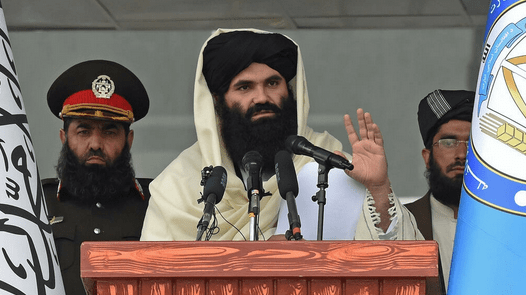
Taliban Accused of Executing 27 ‘Rebel’ Prisoners
A new investigative report accuses Afghanistan’s Taliban rulers of executing 27 opposition fighters in custody during last month’s military operations in the turbulent northern province of Panjshir.
Afghan Witness (AW), an open-source project run by the U.K.-based nonprofit Center for Information Resilience, studied the allegations and published its findings Tuesday, which contradict earlier Taliban claims of killing the men in battlefield clashes.
The victims were said to be affiliated with the National Resistance Front (NRF), which has been waging an armed resistance against the Taliban since the Islamist group seized power more than a year ago.
AW researchers analyzed dozens of social media videos and photographs to “conclusively link” a group of Taliban fighters to the extrajudicial killings of 10 men in Dara district area.
“Five men—one facing the executioners on his knees, the others sitting facing away, all blindfolded with hands bound behind their backs—are repeatedly shot for 20 seconds… accompanied by celebratory cries from the large group of [Taliban] fighters,” the report said, adding that the group of Taliban fighters could be identified with five more men who were later executed.
AW researchers had gathered “credible evidence of a further 17 executions and 30 deaths as a result of the Taliban offensive in Panjshir, bringing the total to 57 victims,” the report noted.
The summary execution allegations date back to mid-September, when the Taliban declared in a statement that their forces had killed 40 armed rebels and captured at least 100 others as part of a “large-scale clearance operation” in several districts of mountainous Panjshir, including Dara. NRF officials at the time had confirmed the death of at least eight of their fighters, dismissing the Taliban claims as inflated.
Taliban officials also announced a defense ministry team had been tasked with investigating allegations of summary executions of resistance fighters, but no details have been shared to date.
AW team leader David Osborn told The Associated Press their findings give the “most clear-cut example” of the Taliban carrying out an “orchestrated purge” of NRF fighters.
Taliban authorities did not immediately comment on the report.
The radical group is under fire from the international community for not governing Afghanistan through an inclusive political system and for restricting women’s rights to work and education. No foreign government has yet recognized the legitimacy of the Taliban government.
The NRF, which is led by Ahmad Massoud — an ethnic Tajik leader — has in recent months regularly claimed guerrilla attacks against Taliban forces, mostly in and around Panjshir, the country’s smallest province located just north of the capital, Kabul.
Critics are skeptical whether the NRF could pose a serious threat to the new Taliban rule. But they see ISIS-K, the Afghan-based affiliate of the self-proclaimed Islamic State terrorist group, as a bigger security challenge for nascent Taliban rule.
ISIS-K has routinely carried out major bombings across Afghanistan, targeting minority Shiite Afghans and security forces, killing hundreds of people in recent months. However, the Taliban downplay the threat, saying their forces have significantly degraded ISIS-K’s presence in the country.
On Tuesday, the Taliban-led Afghan secret agency, known as the General Directorate of Intelligence (GDI), said its special forces raided a key ISIS-K hideout in the northeastern city, Kunduz, killing some militants. The claim could not be verified from independent sources.
Earlier this week, the GDI announced the arrest of two “important” ISIS-K members, saying they were involved in recruiting fighters and plotting attacks on Afghans.
Source: Voanews





